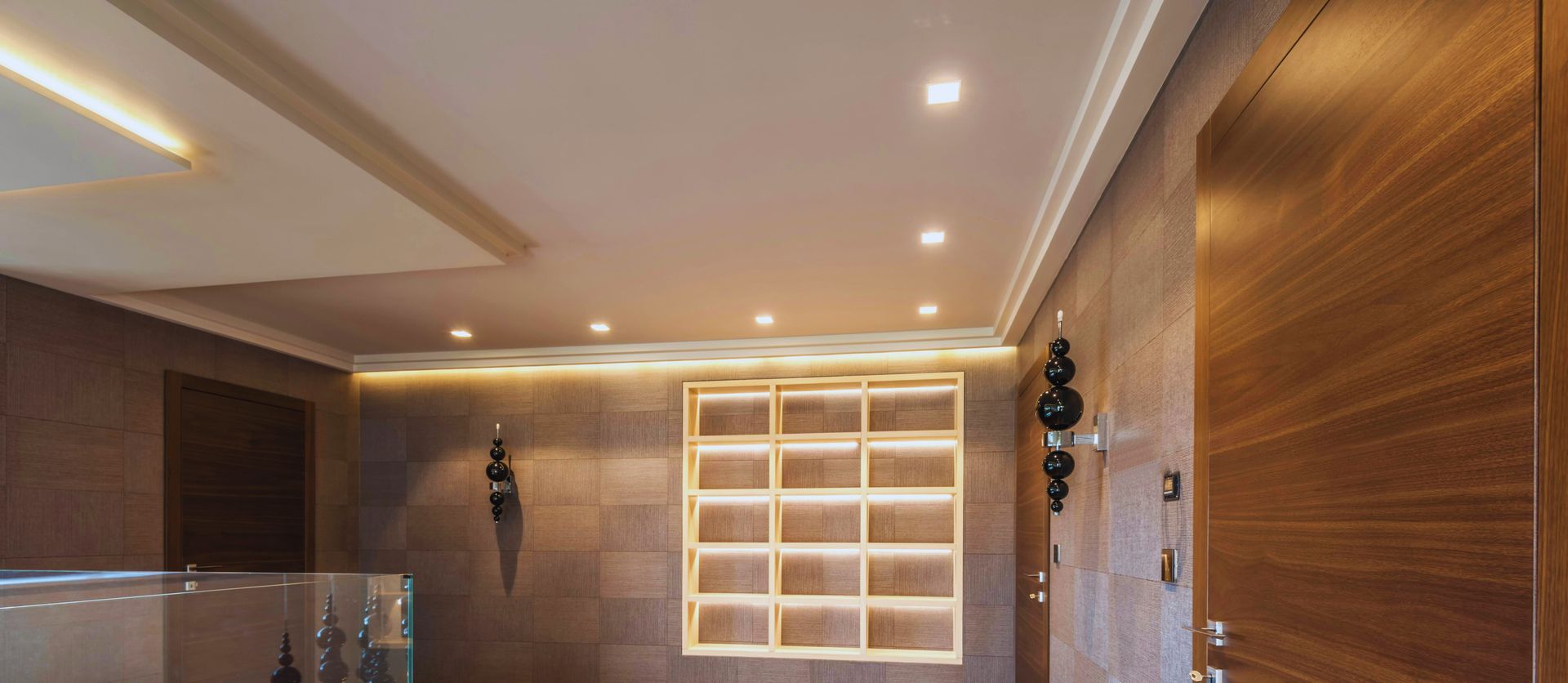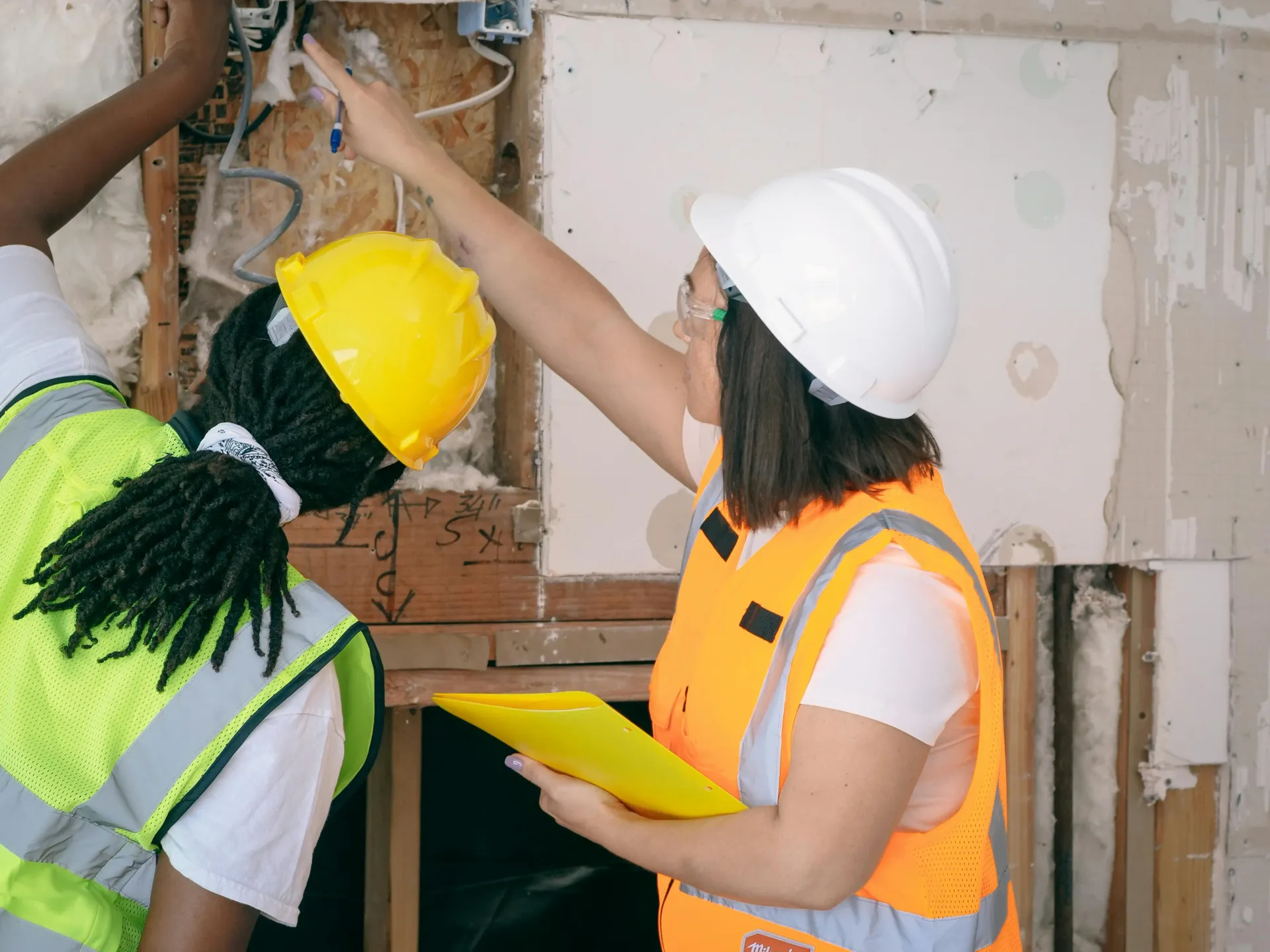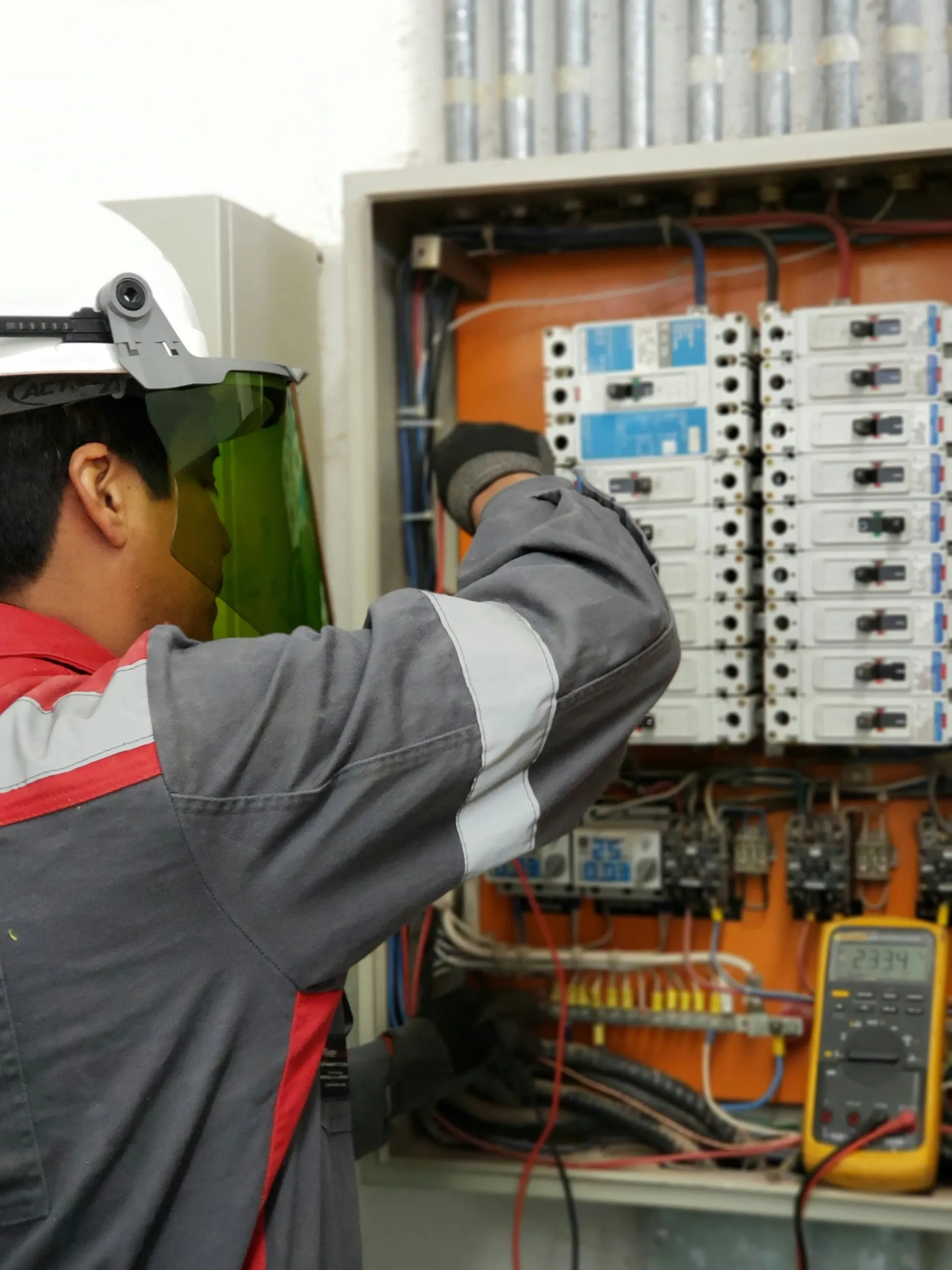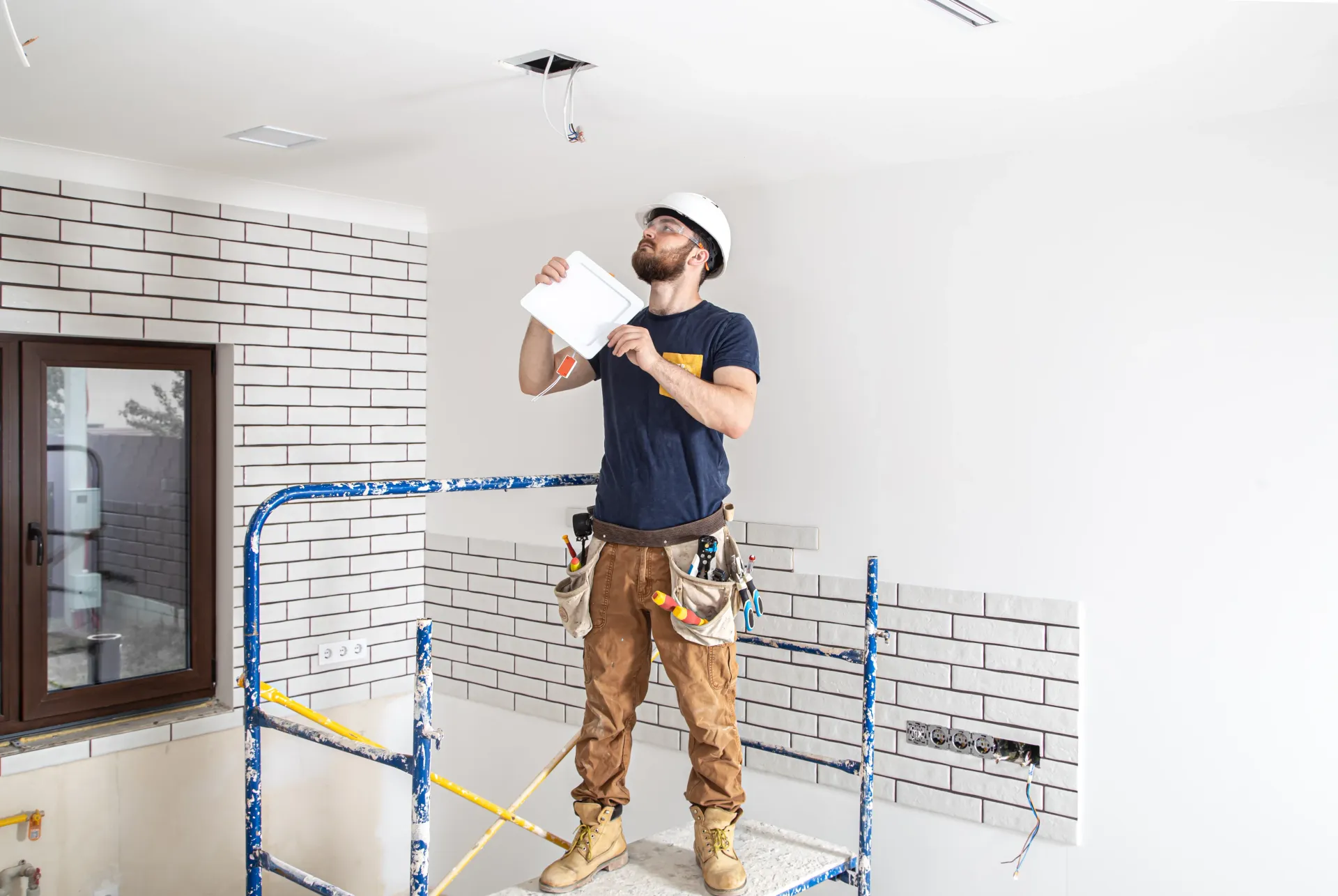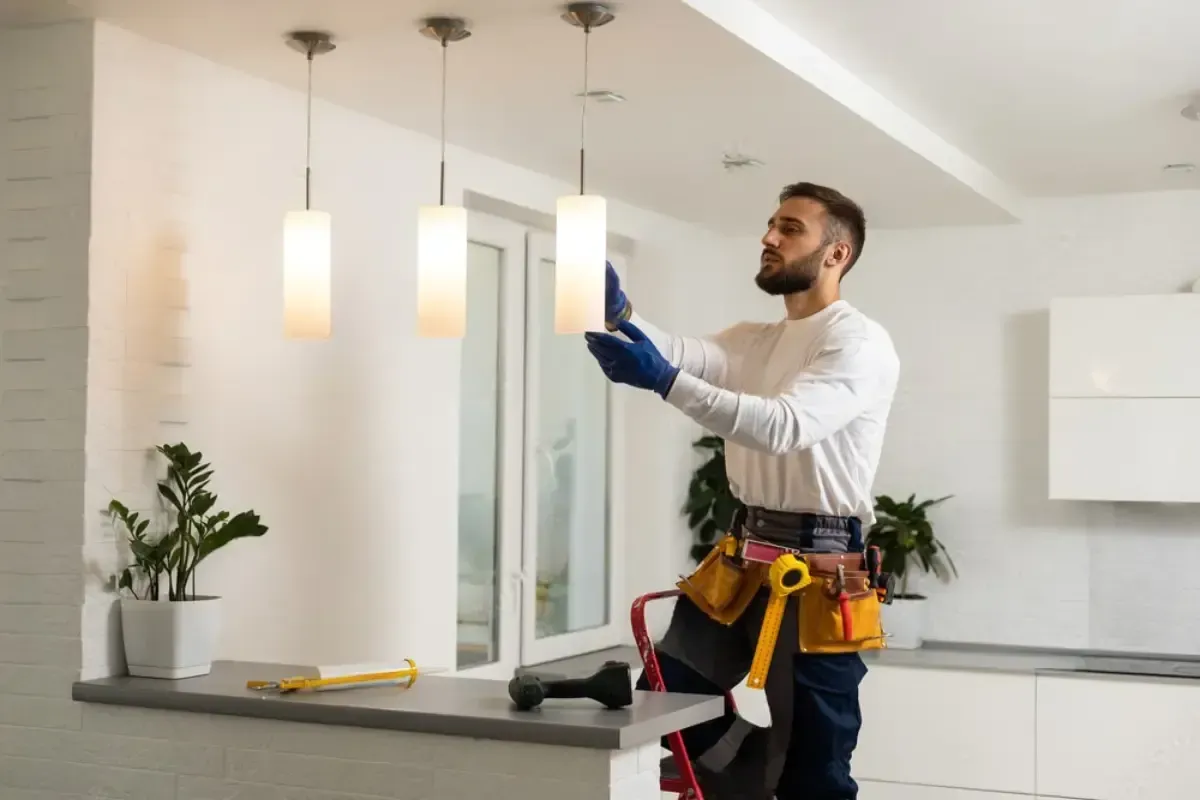Shine Bright and Save Big: The Power of LED Lighting at Home
In the modern age of sustainability and smart living, LED lighting at home has become more than just a trend — it’s a transformative upgrade. Whether you're looking to reduce your electricity bills, revamp your home's aesthetics, or simply make eco-friendly choices, LED lights are an illuminating solution. This guide dives deep into the multifaceted benefits of LED lighting, showing you how to shine bright while saving big.

LED Lighting at Home
Switching to LED lighting is not just about screwing in a new bulb. It's about embracing a smarter, more sustainable lifestyle. LED, short for Light Emitting Diode, offers energy efficiency, longevity, safety, and flexibility that traditional lighting options simply can't match.
From bedrooms to backyards, LEDs provide bright, consistent illumination with minimal energy draw. They’re compatible with smart home systems, customizable in color and intensity, and designed to outlast conventional bulbs by thousands of hours.
Understanding LED Technology
So, what makes LED lighting different? Unlike incandescent bulbs that rely on heating filaments to glow, LEDs use semiconductors to emit light through electroluminescence. This means no wasted energy on heat and an astonishingly efficient light-to-energy ratio.
An average LED bulb uses about 75% less energy than an incandescent bulb and lasts up to 25 times longer. That’s not a modest improvement — it’s a revolution in lighting technology.
How LEDs Work: A Simple Explanation
At its core, an LED contains a microchip that receives an electric current, which excites electrons and emits photons (light particles). These photons create visible light. Because this process is direct and doesn’t rely on heat, LEDs remain cool to the touch and ultra-efficient.
This science-backed solution leads to better illumination with less environmental strain. It's lighting redefined — cleaner, smarter, and longer-lasting.
How LEDs Lower Your Electricity Bill
Let’s talk numbers. Replacing just five of your most-used lights with LEDs can save up to $75 annually on energy costs. Over time, these savings compound significantly — especially in homes that use lighting heavily during evening hours.
Additionally, many utility companies offer rebates or discounts for switching to LED, making it a win-win situation for your pocket and the planet.
Calculating Long-Term Savings from LEDs
It’s not just about upfront cost — which, by the way, has dropped significantly in the last decade. The real value lies in longevity. A typical incandescent bulb lasts around 1,000 hours, while an LED can clock up to 25,000 hours or more.
Let’s break it down:
Type Cost/Year Lifespan Energy Use
Incandescent ~$8 ~1,000 hrs 60W
CFL ~$2 ~8,000 hrs 14W
LED ~$1 ~25,000 hrs 10W
Comparing LED vs. Incandescent vs. CFL
LEDs are clearly the frontrunners when it comes to cost efficiency and performance. While CFLs (Compact Fluorescent Lamps) were once hailed as the energy-saving champions, they’ve since been dethroned by LEDs due to issues like mercury content, slower warm-up times, and shorter lifespans.
Cutting Carbon Footprints at Home
LEDs help reduce greenhouse gas emissions by cutting down energy consumption from fossil-fuel-powered plants. A single LED bulb prevents approximately 400 pounds of CO₂ emissions over its lifespan.
Switching your entire home to LED could equate to taking a car off the road for over six months!
Why LEDs Are Greener Than You Think
Unlike CFLs, LEDs don’t contain mercury or other toxic materials. They're also fully recyclable, which means less electronic waste ending up in landfills. Many manufacturers now use eco-friendly packaging as well, minimizing the product’s footprint from start to finish.
Reduced Landfill Waste and Recycling Options
With fewer bulbs needing replacement and better recyclability, LEDs are the clear choice for environmentally conscious households. Check with your local municipality for drop-off centers or retailers like Home Depot and Lowe’s, which often have bulb recycling programs.
LEDs and Eye Health: A Safer Light
Flicker-free and glare-controlled LEDs can significantly reduce eye strain, particularly for children and work-from-home adults. LED bulbs offer better light quality and higher CRI (Color Rendering Index), which means you’ll see truer, clearer colors.
Fire Safety and Heat Output Reduction
Incandescent bulbs convert 90% of their energy into heat — a known fire hazard. LEDs stay cool even after hours of use. That makes them ideal for enclosed fixtures, child-safe environments, and spaces like attics or closets.
Flicker-Free Technology and Mental Comfort
Quality LEDs are engineered to reduce invisible flicker, which has been linked to headaches and fatigue. By eliminating this visual disturbance, LEDs provide a more stable, comfortable environment.
How LEDs Enhance Home Decor
Gone are the days when LEDs were limited to harsh, sterile white light. Today, they come in a spectrum of warm, cool, and daylight hues that complement every corner of your home — from ambient living rooms to focused kitchen prep areas.
Color Temperature and Mood Settings
Color temperature, measured in Kelvins, affects how a room feels:
- 2700K–3000K: Warm white for cozy spaces like bedrooms
- 4000K: Cool white for kitchens and bathrooms
- 5000K+: Daylight for offices and garages
This flexibility makes LED lighting a designer’s best friend.
Accent Lighting and Architectural Highlights
Whether you're spotlighting a bookshelf, underlighting cabinets, or creating dramatic stair risers, LEDs offer sleek solutions that integrate seamlessly into modern home design.
Automating Light for Energy Efficiency
Pair your LED bulbs with smart home systems like Alexa, Google Home, or Apple HomeKit. You can schedule lights to turn off automatically, reduce brightness at bedtime, or simulate presence while you're on vacation.
Integrating LEDs with Smart Home Hubs
Smart LED bulbs are compatible with most major platforms. Set scenes, adjust tones, or voice-control your lights — all from your phone or voice assistant. Now that’s smart living.
Scheduling and Sensor-Based Controls
Motion sensors, daylight sensors, and programmable timers help you eliminate energy waste. Walk into a room, and the lights turn on. Walk out, and they turn off. Convenience and savings, all in one.
Lumens vs. Watts: What to Look For
Forget watts — lumens measure actual brightness. A 60W incandescent is equivalent to 800 lumens in LED terms. Look at the lumen rating, not wattage, for accurate comparisons.
Matching LEDs to Room Functions
Use warm LEDs in bedrooms, neutral white in kitchens, and bright daylight in task-heavy spaces. Layer lighting to mix ambiance and functionality.
Best LED Brands and Features to Consider
Stick with trusted names like Philips, GE, Cree, and Sylvania. Look for features such as dimmability, CRI over 80, Energy Star certification, and app control.
Easy Installation Tips for Beginners
Most LED bulbs fit standard sockets. Just unscrew your old bulb, screw in the new one, and voila — instant upgrade! For fixtures or panel lights, follow the manual or consult an electrician from Electrical Service.
Cleaning and Lifespan Optimization
Clean your bulbs with a soft dry cloth. Avoid touching LEDs with bare fingers, especially those in enclosed fixtures, as oils can reduce efficiency.
When to Replace and Recycle Your LEDs
If an LED flickers or dims prematurely, it may be time for replacement. Always recycle your bulbs to keep hazardous materials out of landfills.
Are LEDs Really Worth the Investment?
Absolutely. While LEDs cost more upfront, they pay for themselves through reduced energy bills and replacement costs. It’s the ultimate value-over-price proposition.
Real-World Case Studies and Homeowner Reviews
Homeowners report up to 40% reductions in lighting-related energy use within the first year of switching. One family in Texas saved over $200 in their first 12 months.
Incentives, Rebates, and Tax Breaks
Look into federal tax credits, Energy Star rebates, and utility company incentives. Your local electrician or Contact can help guide you through available programs.
Debunking LED Misconceptions
No, LEDs don’t cause cancer. That myth stems from misinformation around blue light exposure. LEDs used properly are completely safe.
Does LED Light Attract Bugs?
Not as much as incandescent bulbs. LEDs emit less UV light, which is what typically attracts bugs.
Boosting Curb Appeal with Efficient Lighting
LED pathway lights, porch fixtures, and landscape uplighting can dramatically improve your home’s nighttime look while using a fraction of the energy.
LED Upgrades in Real Estate Listings
Homes marketed with energy-efficient upgrades tend to sell faster and at higher prices. It’s a small change with big impact.
Testimonials from Realtors and Buyers
“Buyers love seeing ‘energy-efficient lighting’ in the features list,” says Lisa Turner, a realtor in Phoenix. “It’s low-cost but high-return curb appeal.”
Lighting Your Yard with LED Power
Outdoor LED lighting offers better brightness, motion activation, weather resistance, and longer lifespans — perfect for patios, driveways, and gardens.
Indoor Ambiance vs. Outdoor Safety
Inside, LEDs are all about mood. Outside, they boost visibility and security. Use both to balance comfort and safety throughout your property.
Weatherproof and Motion-Sensor Features
Choose IP-rated fixtures for waterproofing and models with dusk-to-dawn or motion sensors for maximum efficiency and coverage.
Understanding LED Efficiency Ratings
Energy Star certification guarantees your bulb meets stringent energy efficiency and quality standards. This is the gold standard for energy-conscious buyers.
What Makes a Bulb Energy Star Certified?
To earn the label, bulbs must offer a minimum 3-year warranty, consistent brightness, color quality, and rapid turn-on with no flicker.
The Role of Electrical Service in Compliance
Hiring a professional Electrical Service ensures your LED upgrades are safe, code-compliant, and optimized for performance.
Why You Should Call in the Experts
While DIY works for most bulb swaps, upgrading fixtures, rewiring, or installing smart systems is best left to licensed electricians.
Questions to Ask Your Electrical Contractor
- Are you licensed and insured?
- Do you offer LED installation packages?
- Can you help with smart home integration?
Electrical Service You Can Trust
For reliable, expert help with LED installations and upgrades, contact AT Electric LLC.
Simple Swaps for Immediate Results
Start small: swap kitchen lights, desk lamps, or your most-used hallway fixture with LEDs. You’ll notice the difference immediately.
Bulk Buying and Cost-Effective Planning
Buying multi-packs or converting rooms in phases helps spread out the cost while accelerating your savings.
Contact a Trusted Installer Near You
Need help getting started? Contact an experienced electrician to assess your home's lighting and plan a full LED transition.
Light Up Your Life, Save the Planet
LED lighting isn’t just about brighter rooms. It’s about brighter choices. From energy savings to environmental impact, and from ambiance to automation, LED lighting at home is a smart investment in a sustainable future.
FAQs
How much can I save by switching to LEDs?
Most homeowners save between 30–50% on their lighting energy costs annually.
Are LEDs safe for long-term use?
Yes. LEDs produce less heat, contain no mercury, and are designed for safe, long-lasting performance.
Do LED bulbs work with dimmers?
Only if they’re labeled “dimmable.” Make sure your dimmer switch is compatible with LEDs.
Can I install LED lights myself?
For basic bulb swaps, yes. For fixtures and smart systems, consult a
licensed electrician.
Do LEDs really last 25,000 hours?
Under normal use, yes. Some can last even longer depending on quality and usage patterns.
What’s the best place to start upgrading?
Begin with high-use areas like kitchens, bathrooms, and outdoor entryways for the fastest return on investment.
Links:
